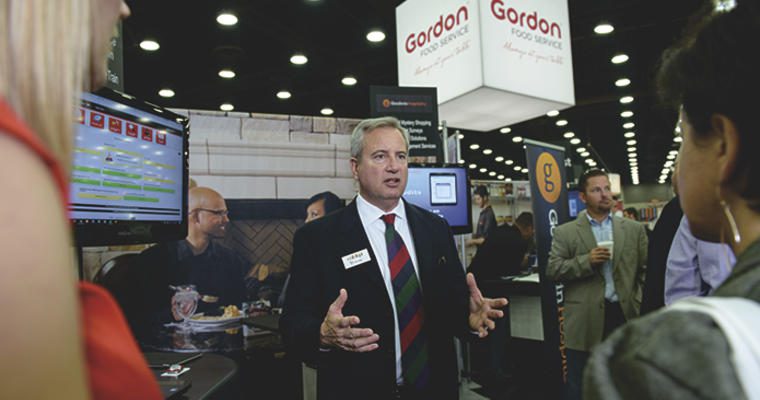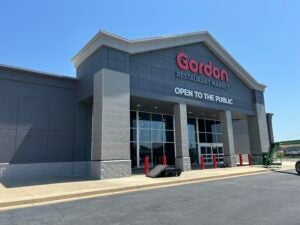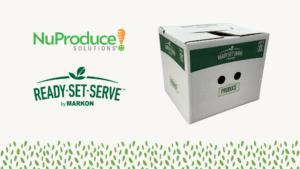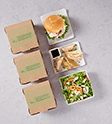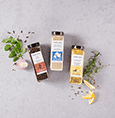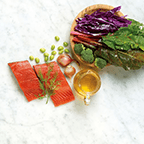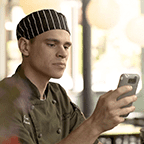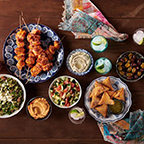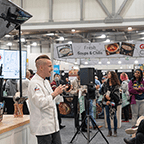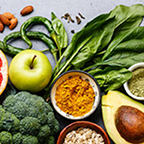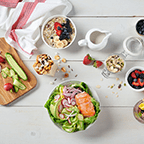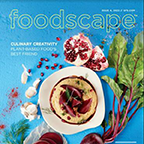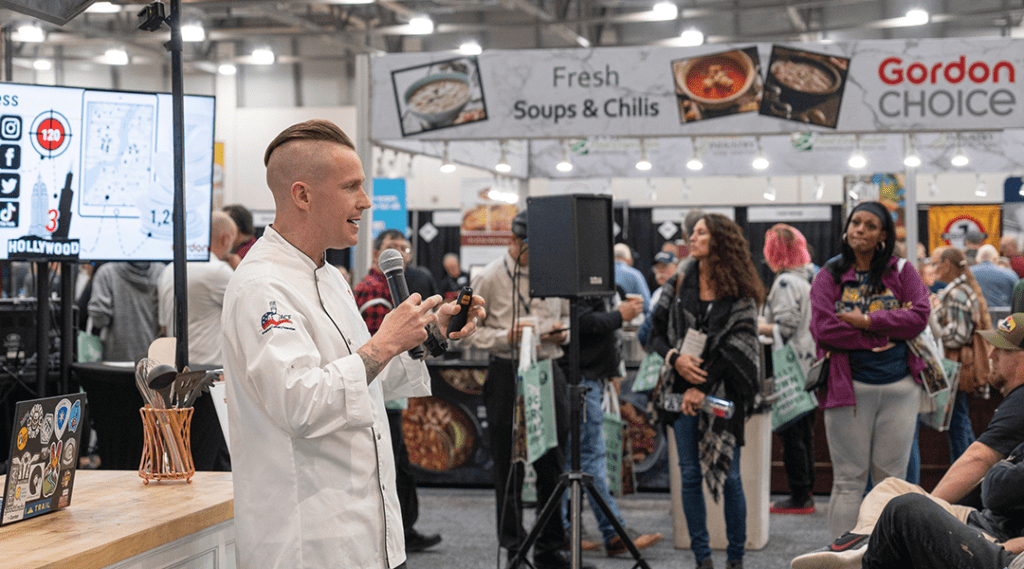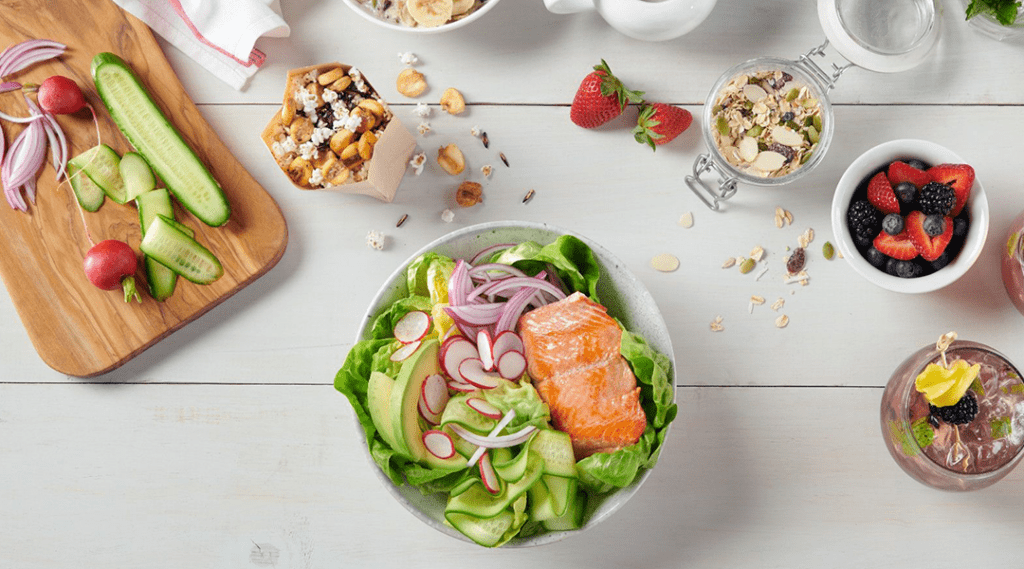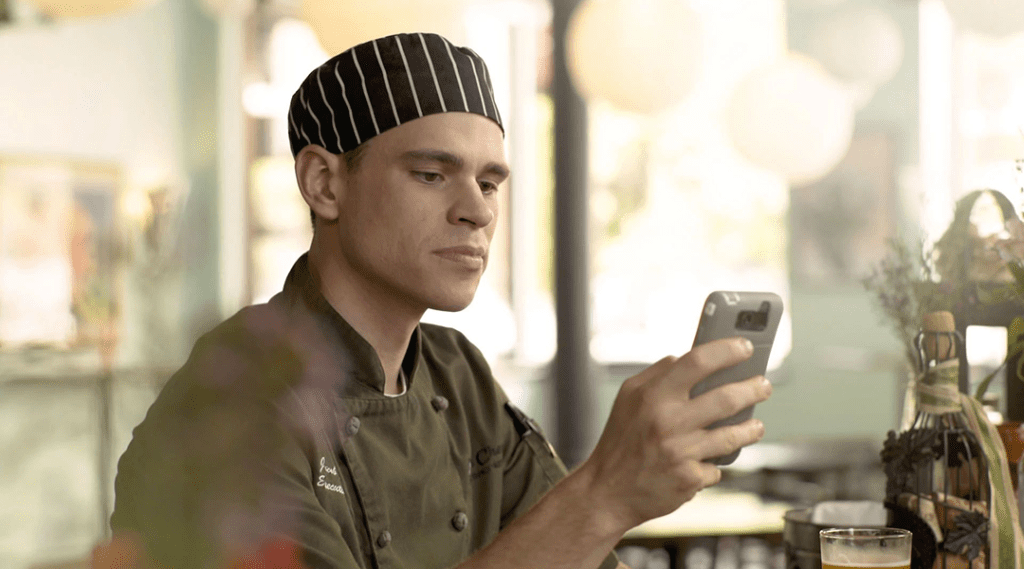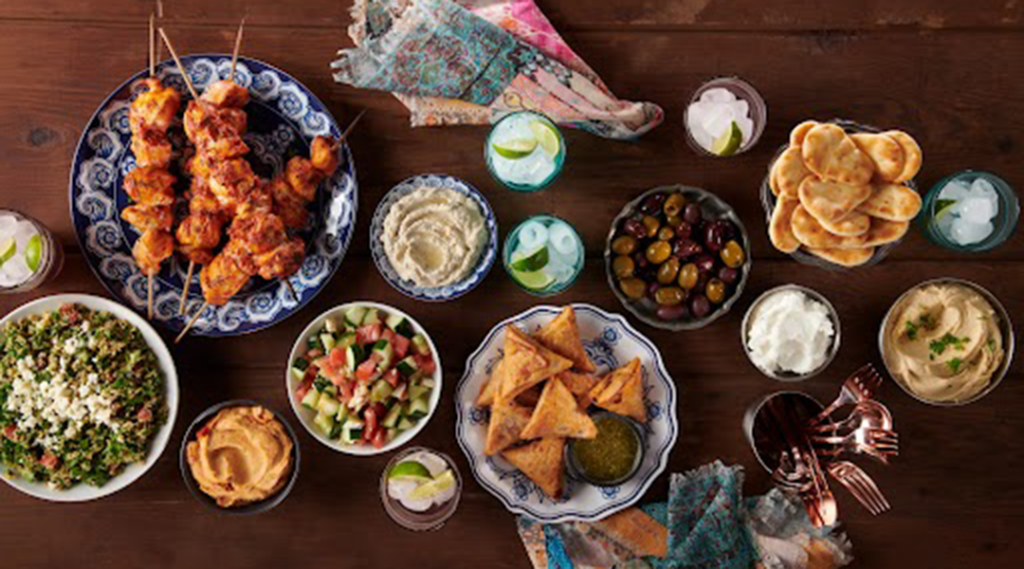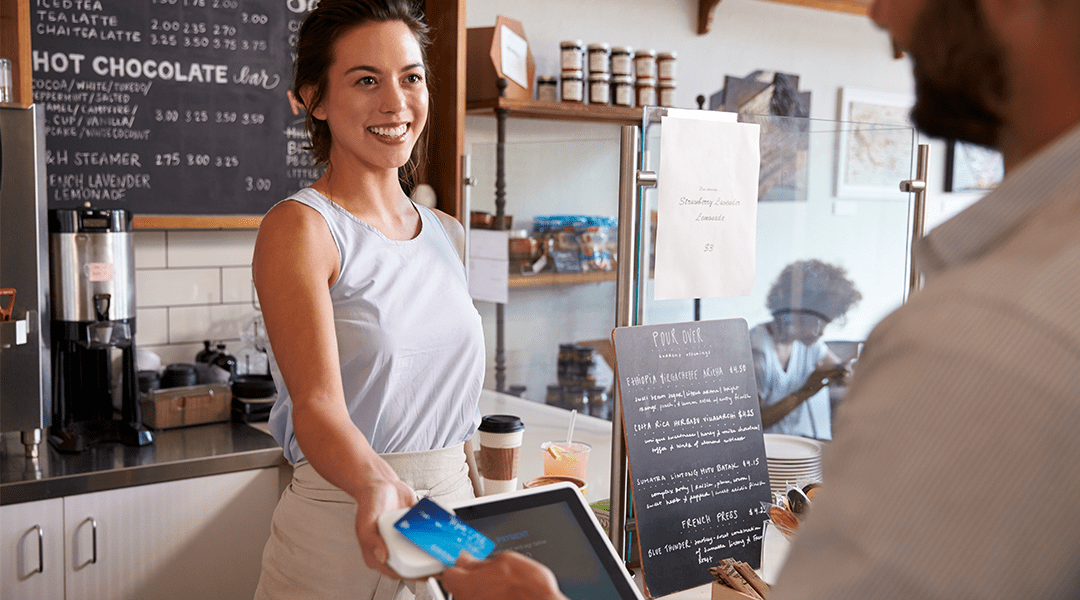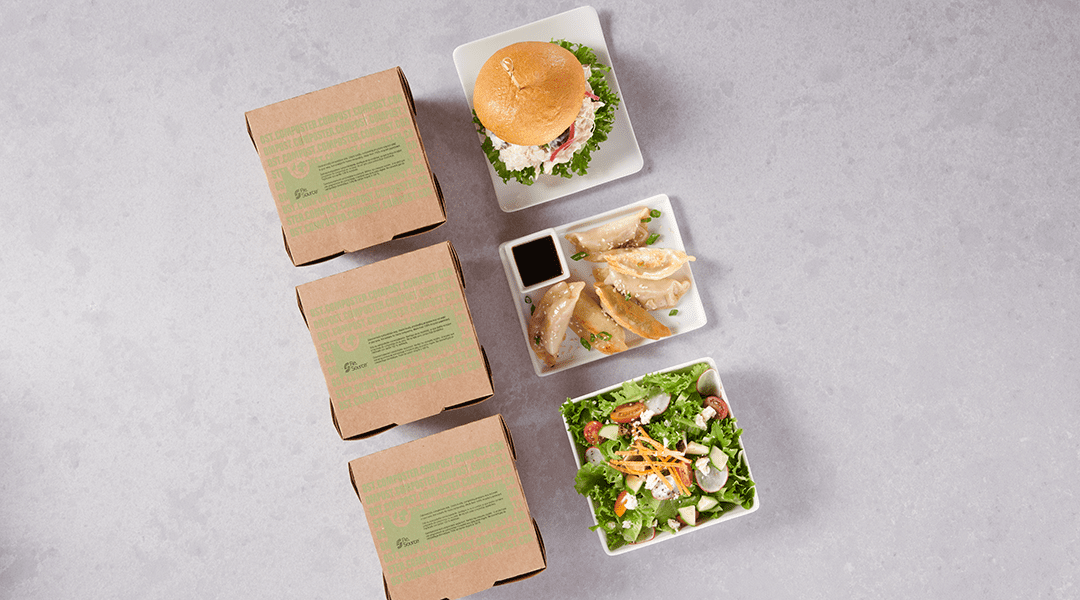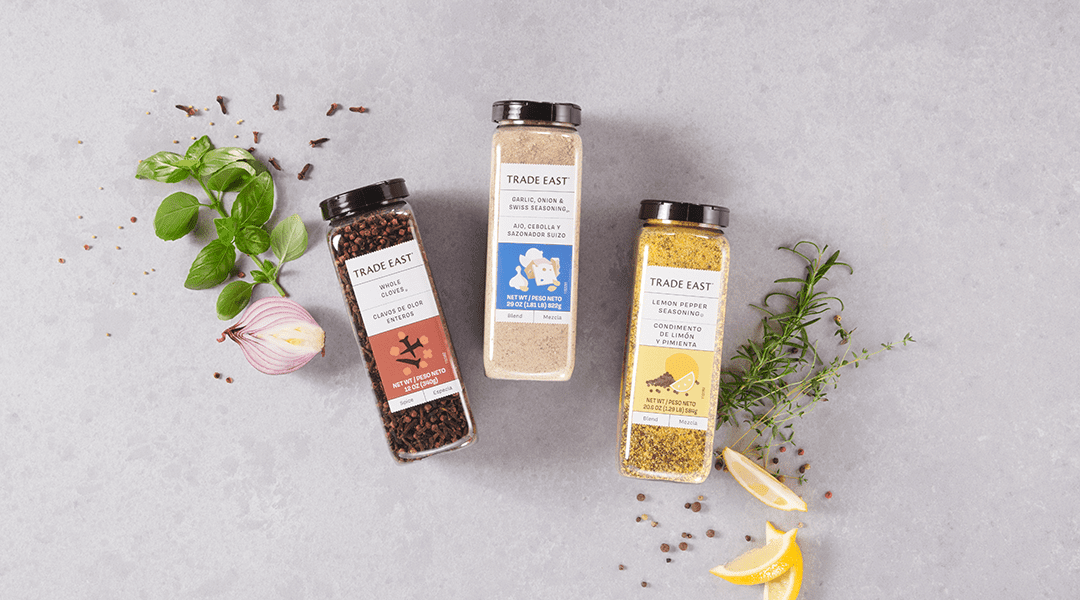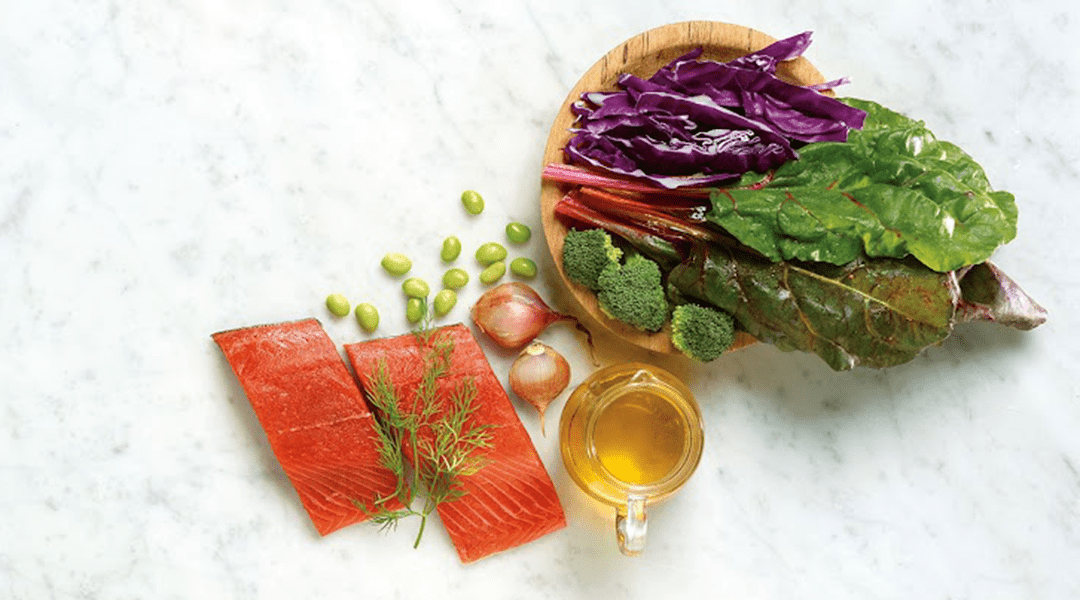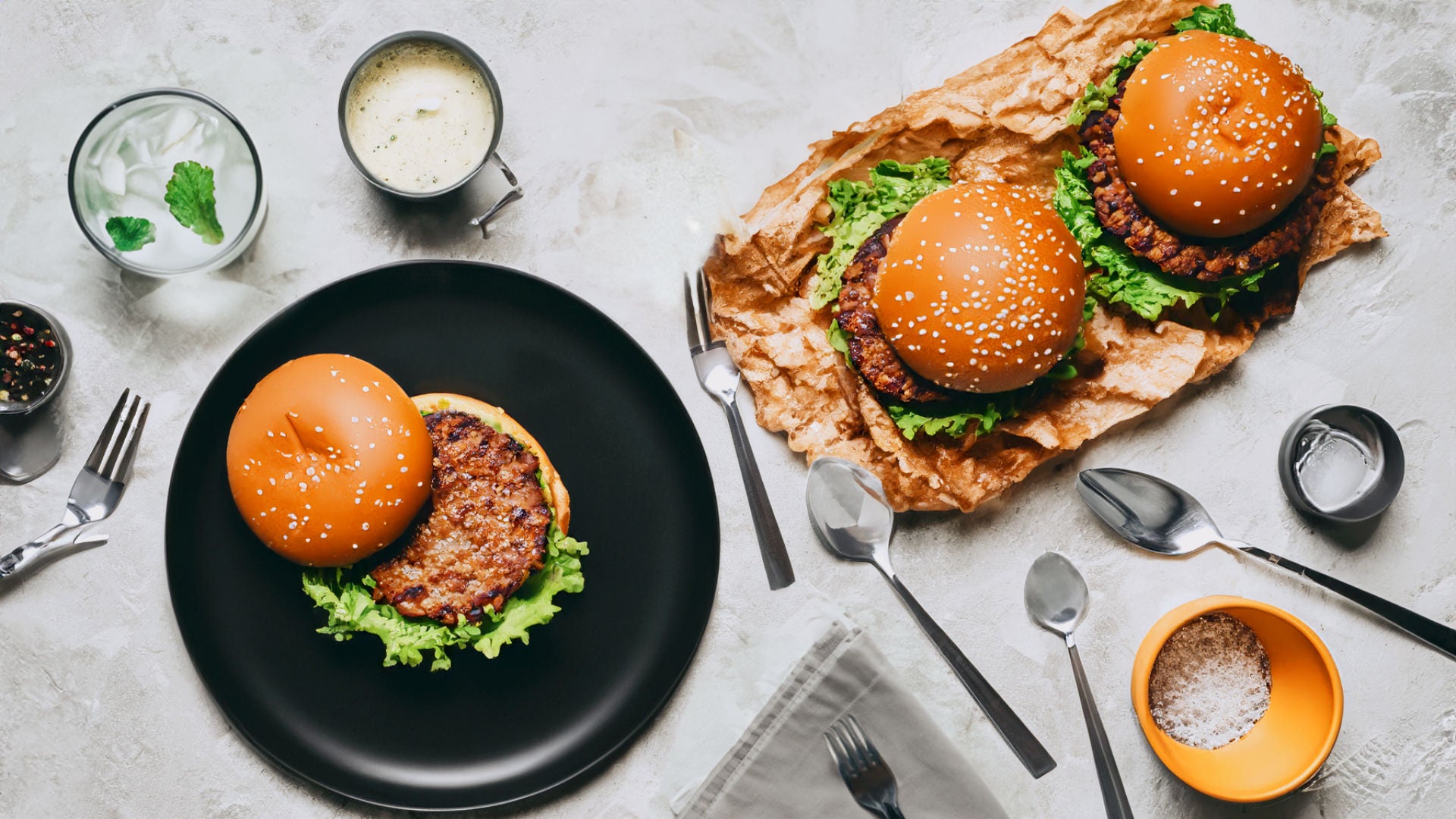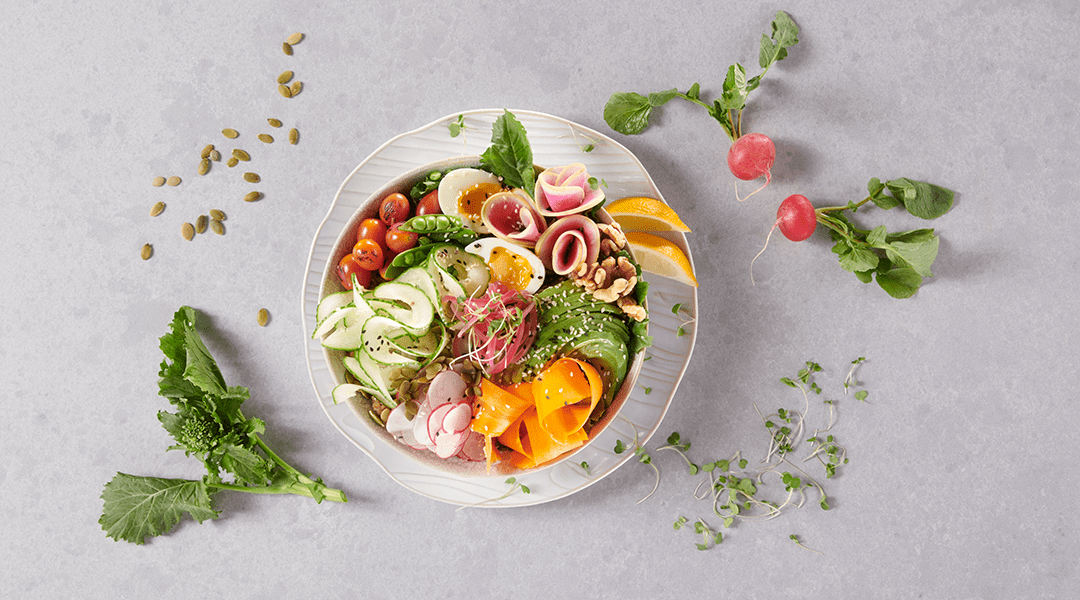What’s the best response to learning about a trade show? Make plans to attend—and map out plans for working the show.
Sure, shows require time away from the operation and your family, but you’ll come home reinvigorated and full of ideas to benefit your business. Where else can you receive so much professional development and training in one place? Trade shows are a prime opportunity to learn more about the foodservice industry and trends—plus they’re excellent for making valuable contacts. The bottom line? Going to trade shows is a way to invest in yourself and your business.
Attending a trade show can help operators “connect to new ideas, upcoming trends, knowledgeable insights and business solutions to give them that edge,” says Gordon Food Service® North American Trade Show Manager Matt Kirkwood. Here’s another reason: Trade shows can help chefs and operators find new and exciting products that help them craft menus that stand out from the competition.
Here’s how to make the most of the show experience.
5 steps for pre-show prep
1. Organize your thoughts. Set goals and think about what you want to get out of a show. “Make a list of top-of-mind or key issues about which you have questions, and make time to visit a few of the experts,” Kirkwood advises. Highlight the names of vendors and products you want to see, then prioritize meetings and booth visits.
2. Plan ahead. Dennis Lombardi, president of Insight Dynamics, an Ohio-based restaurant-advisory firm, draws a parallel between painting a house and attending a show. “Eighty percent is preparation,” says Lombardi, who attends three or four shows a year to keep up with industry trends and information. Typically, he spends several hours preparing for a show, weeks in advance of the actual show date.
3. Arrange meetings ahead of time. Contact the people you want to see, give them a reason to see you, then arrange a time and place to meet. Schedule time with your Customer Development Specialist—don’t assume that you’ll run into each other.
4. Schedule your time. Mentally sort the show into buckets—products, learning and inspiration, business solutions, networking, etc.—beforehand. Visit the show’s website, study the schedule and plot out your time.
5. Don’t overdo it. “Trying to pack too tight of a schedule is a mistake,” Lombardi says. As a rule of thumb, he schedules twice the amount of time he thinks he’ll need for each appointment. Building air into the schedule leaves time to run late, and also leaves some breathing room for walking the halls or catching a seminar.
7 ways to maximize your experience at the show
1. Be comfortable. Wear comfortable shoes with closed toes and sturdy soles, and don’t choose show time to break in a new pair. If the show involves tastings, forgiving waistbands are the order of the day. Drink plenty of water, and be smart about what you carry. “Bring only what you need,” Heredia says. “Lugging around a heavy purse or laptop bag can really get tiring fast.”
2. Be selective about information intake. Gathering too much material can be overwhelming. Grab only the point-of-sale pieces you’re really interested in, and make notes about what makes various products appealing, Ask vendors if they can provide the information digitally. Make notes—they’ll help you remember the great ideas from the show and will provide context for follow-up emails from the contacts you made there.
3. Keep your ears and your mind open. Often, the innovators who speak at conferences have very out-of-the box ideas for how to meet challenges. Keep listening and have an open mind, even if what you hear may not initially seem relevant to the way you do business. To some extent, that’s part of the point, and what seems unexpected may be adaptable and scalable to your operation.
4. Ask questions. Don’t hold back. Target questions to your operation’s needs. At one Midwestern show, for example, a chef who runs high-end operations spoke about leveraging seasonality and mentioned a number of leading-edge ingredients and applications. During the Q&A afterward, the owner of a small-town Ohio pizzeria asked how could leverage the opportunity and, immediately, the speaker offered a number of down-to-earth, operation-relevant approaches.
5. Take pictures. There’s a lot to take in, so having visual record can help make sure vital ideas don’t fall through the cracks. Photograph products, presentations, menu cards, etc.
6. Be gracious. Regard prospective new vendors and other contacts as people, not just the means to an end. “Engage in some kind of conversation … reach out to the person as an individual,” Lombardi says. Such an approach is more pleasant—and it will help you stand out in that person’s post-show memory in ways that facilitate future contact.
7. Keep your phone charged. Smartphones are a handy way to keep in touch with people you need to meet. Make sure your phone is charged. You’ll be taking a lot of pictures, sending a lot of texts, etc., so carry a small backup charger or look for a charging station at the show.
3 ways to follow up after the show
Sit down for an hour or so and summarize your notes. “That helps wrap up a productive show,” Kirkwood says.
1. Follow up with contacts. A call, email or even a personal note will help build relationships with the contacts you meet at shows. Lombardi advocates sharing information, say, on a topic discussed during a show. Sharing information helps people, “and it’s a nice thing to do,” he says.
2. Pause to digest what you’ve taken in. Take 15 minutes or so to sit down and compose your thoughts before getting in the car. Doing this while everything is still fresh may call to mind questions you can get answered while you’re still at the show.
3. Develop action plans. Use the information you’ve gleaned to inform your overall business strategy. Determine how new products and information about flavor trends, preparations and consumer behavior can influence menu upgrades. Make plans for sharing what you’ve learned with your staff.
Overall, “take your time, talk to everyone and pace your sampling,” Kirkwood advises.
